King Henry VIII’s Painter Reveals Some Well-kept Secrets
A towering figure in historical annals, King Henry VIII held the English throne during the early half of the 1500s. Though widely renowned for his reign, he is infamously known for his unusual, albeit exciting personal life.
Among his inner circle was the artist Hans Holbein, a trusted confidant. An art historian recently discovered one of Holbein’s paintings, ultimately uncovering further details about the monarch’s past.
Franny Moyle's Gut Feeling
For the most part, art scholars are constantly seeking an understanding of vintage creations to deduce why and how they were made. As such, Franny Moyle, a respected art historian, chose to investigate the personal painter of King Henry VIII.

Source: Aspects Of History
The more Moyle researched, she went down a rabbit hole where she realized that Hans Holbein may have encoded a cryptic message within one of his less celebrated works. That discovery inspired her to keep digging, and the string kept unraveling.
Hans Holbein's History
Hans Holbein, a German artist, was known to be among the best portrait painters in history. After seeing some of Holbein’s artworks, King Henry VIII was incredibly impressed that he hired him to paint his portrait.
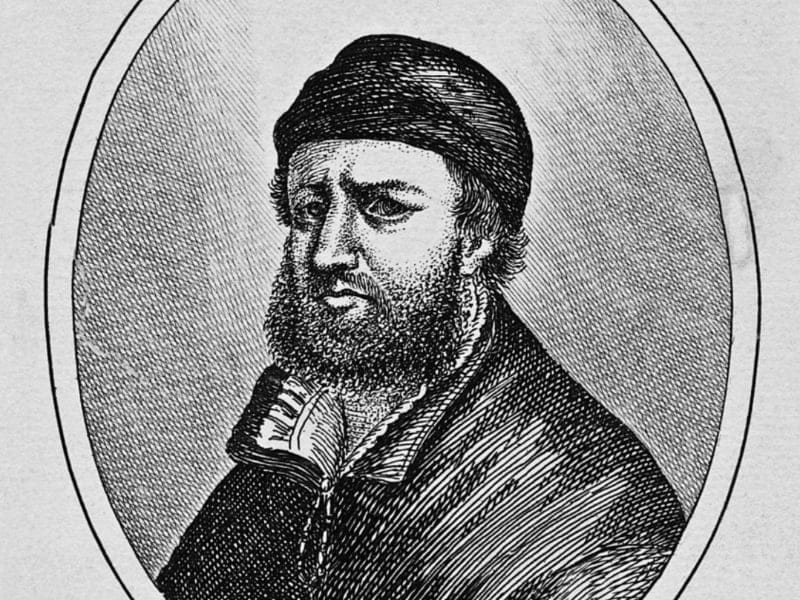
Source: Getty Images/Kean Collection
The legendary artist did a great job, and as a result, Holbein painted more portraits of the King and his inner circle. Yet, despite his extensive painting portfolio, it was a portrait from 1540 that caught the attention of the art expert Franny Moyle.
Where It All Began
Having been born into a German family with an artistic background, it wasn’t surprising that Holbein would inherit the creative bug, and his father was his first art teacher. As a young adult, he traveled across Europe, taking on different painting jobs.

Source: Getty Images / Archive Photos
Hans’s travels led him to England, where he was given the opportunity to work with King Henry VIII, and after a while, he eventually settled down in the country. With his exceptional painting skills, the painter soon became one of England’s most well-known and celebrated artists.
Understanding Holbein's Art
Even though Moyle had previous knowledge of Holbein’s work, she became curious to learn more about the iconic painter. As she delved deeper, she discovered that many of his pieces held hidden meanings, coded messages, and signs that were only recognizable to those familiar with the subject.
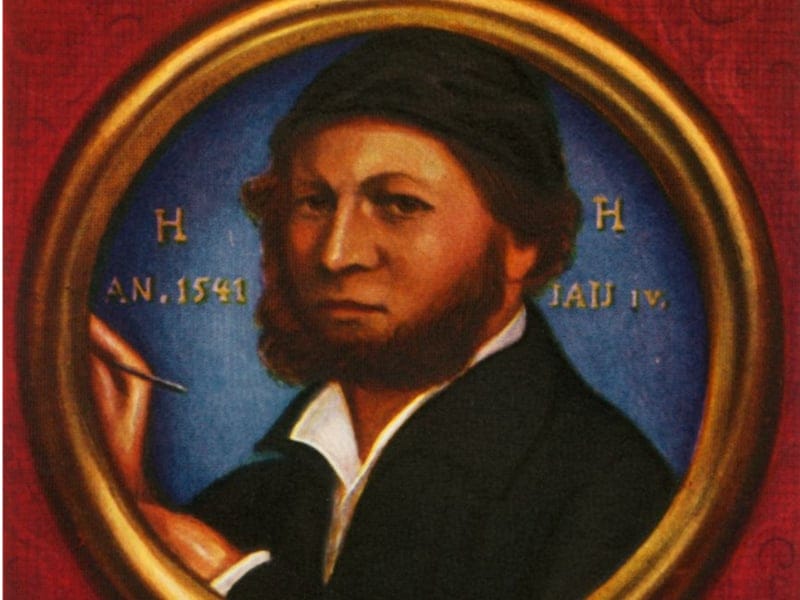
Source: Getty Images/Print Collector
Each brush stroke and every element in the painting were not accidental; everything within the artwork was intentional. Moyle wanted to uncover these secrets and understand the true meaning of the artwork and wouldn’t stop at anything.
Examining The Standout Piece
The 1540 painting by Holbein that drew Moyle’s attention was a portrait depicting one of Henry VIII’s six wives. Regardless, while she had some knowledge about the King’s wives, the art historian was unsure of which wife it was.
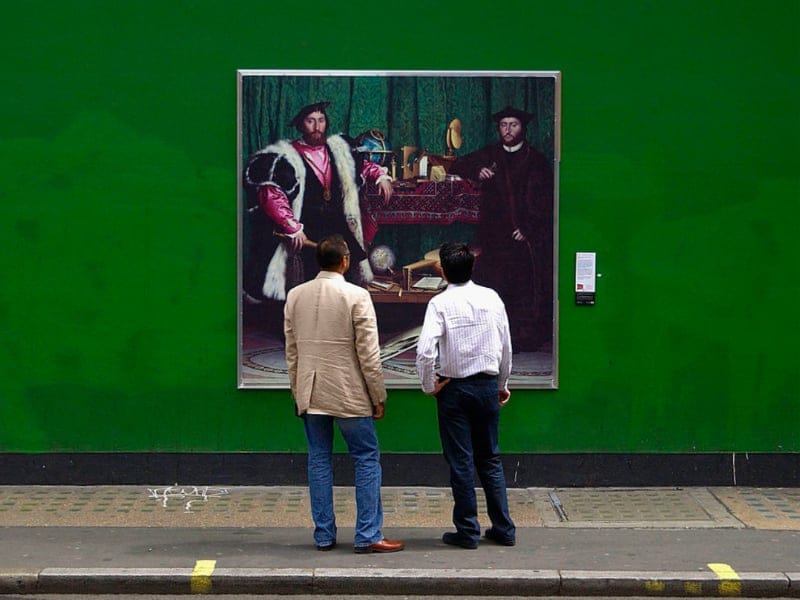
Source: Getty Images/Jim Dyson
As she continued to study the portrait, she found that there was more to it than meets the eye. Moyle realized that the painting held many secrets and decided to conduct more research on the King and his wives to understand Holbein’s true meaning behind the portrait.
Who Was King Henry the Eighth?
King Henry VIII, also known as “the father of the Royal Navy,” was one of the most prominent figures in English history. He reigned as King from 1509 until his passing in 1547. Henry VIII was known during his lifetime for his many marriages, six to be exact.

Source: Getty Images/brandstaetter images
All wasn’t rosy in the palace, as each of these unions came with its own share of challenges and conflicts. The King’s personal relationships featured heavily in the artwork of Holbein, who documented what was happening at the time.
The King Wanted An Heir
When the King took the throne at just 17, one of his top priorities was to find a suitable partner to produce an heir to the throne. And so Henry VIII quickly tied the knot with Catherine of Aragon just a month after becoming King.
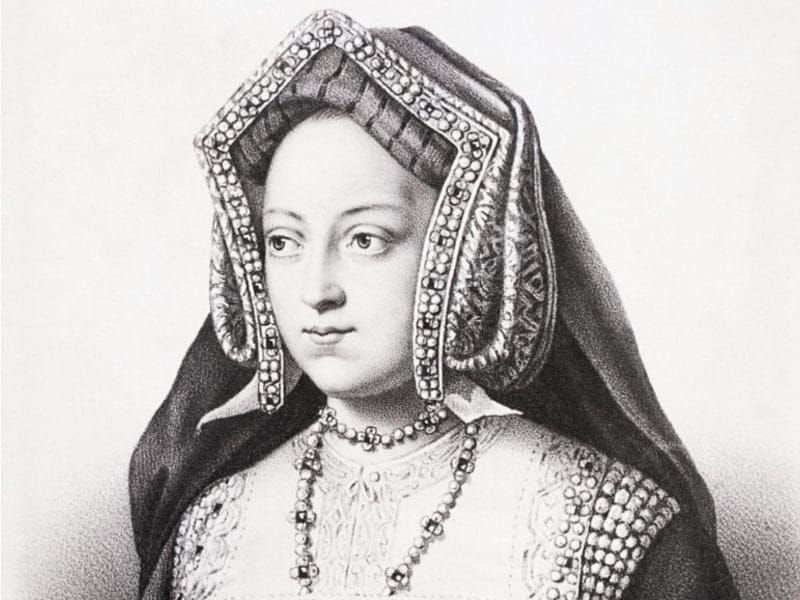
Source: Getty Images/Bettmann
Together, the royal family had six kids, but unfortunately, only one of them, Mary, made it to adulthood. The lack of an heir did not bode well with the King, and he sought other options.
An Illicit Separation Ensued
Once Henry VIII realized that his first wife, Catherine of Aragon, had not provided him with a male heir, he requested a divorce from the Pope. Of course, the Pope denied his request, but Henry, always a stubborn lad, divorced anyway.
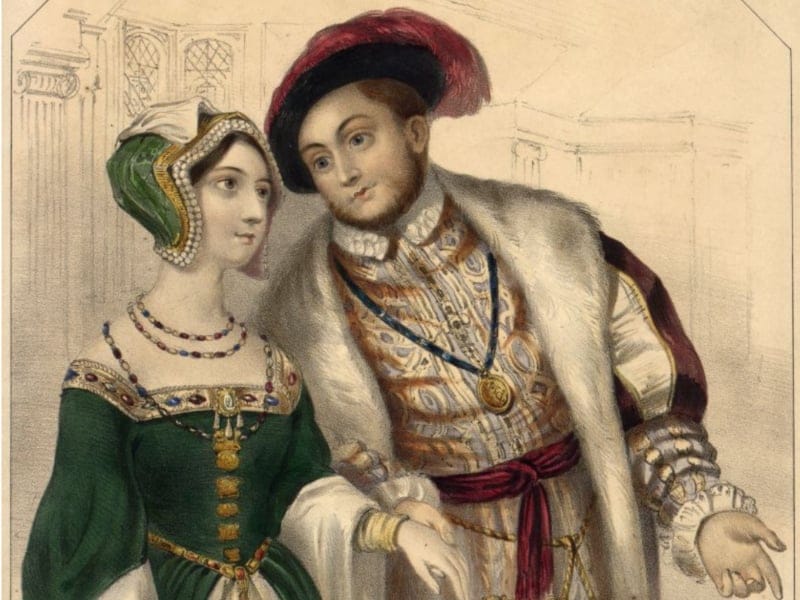
Source: Getty Images/Hulton Archive
This act of rebellion ultimately led to the creation of the Church of England, as Henry broke away from the Catholic Church. He then married his second wife, Anne Boleyn, in 1533. Yet, this union would also prove to be tumultuous, as Henry’s quest for a male heir would lead to more scandal and strife in the years to come.
The Situation Remained The Same
Even though he jumped into another marriage as soon as he’d divorced Catherine, Anne and Henry’s marriage wasn’t exactly a fairy tale. Sadly, Anne couldn’t give him a son, which was a big deal for the King. Because of that, he desperately wanted to end the marriage and did everything he could to make it happen.
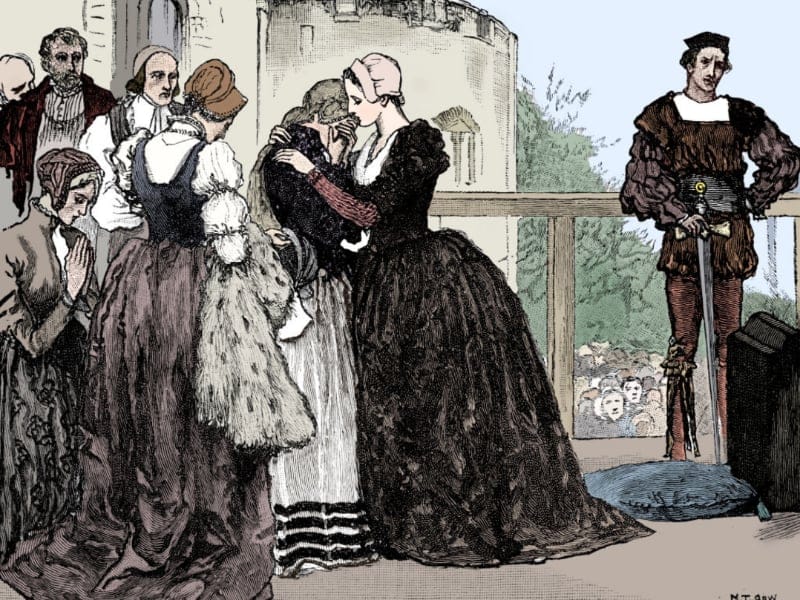
Source: Getty Images/ Print Collector
He accused her of cheating and other shady stuff, and when that ploy didn’t work, he used his power to get what he wanted. Being the powerful King he was, he ordered Anne to be executed.
Jane Seymour, The Next Queen
Just a few short days after Anne Boleyn was executed, King Henry VIII had already found his next wife, and he immediately walked down the aisle with his new bride, Jane Seymour. This time, luck was on their side, and she was able to give him one child, a son named Edward, who would eventually become King.
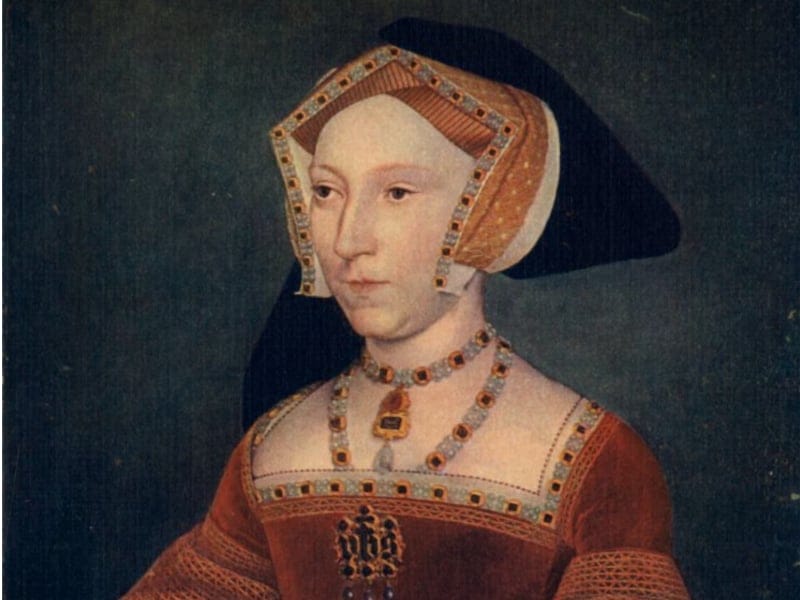
Source: Getty Images/Print Collector
Sadly, the joy of having an heir was short-lived, as Jane passed away shortly after giving birth. It was a devastating loss for Henry, as he had finally gotten what he had wanted for so long.
A Fourth Marriage On The Cards
After the passing of Jane Seymour, his third wife, King Henry VIII, was in no rush to return to the marriage. The loss had hit him hard, and he needed time to heal, and the idea of another union didn’t bode well with him.
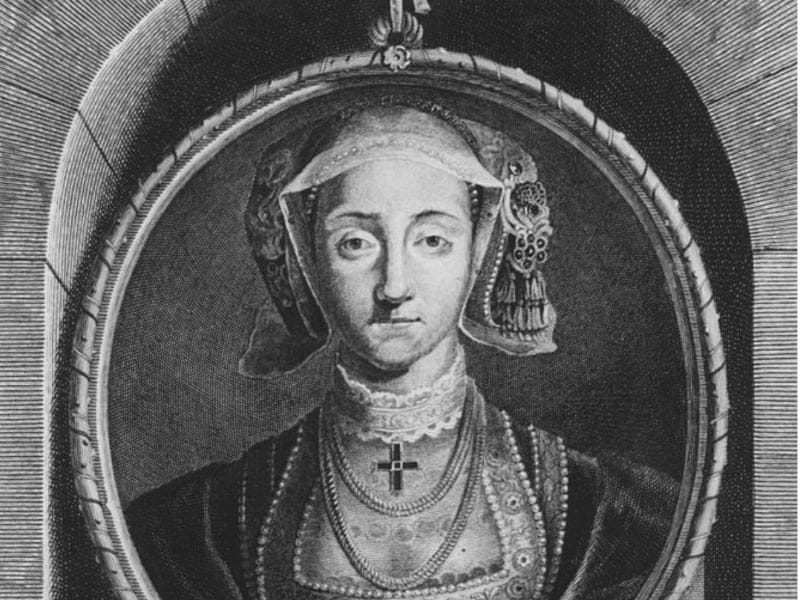
Source: Getty Images/Hulton Archive
Yet, he was convinced by his advisors to take a look at two sisters from a German royal family as potential brides. After careful consideration, the King picked Anne of Cleves based on her portrait, but when he finally met her in person, he was disappointed to find her not as attractive as he had imagined. So he ended up annulling the marriage.
Catherine Howard Gets Involved
After his fourth marriage went down in flames, the King set sights on a new conquest: a 19-year-old named Catherine Howard. Sadly, this union would also end in tragedy. Like his previous wife, Anne Boleyn, Henry decided to divorce Catherine and accused her of all sorts of offenses, including adultery.
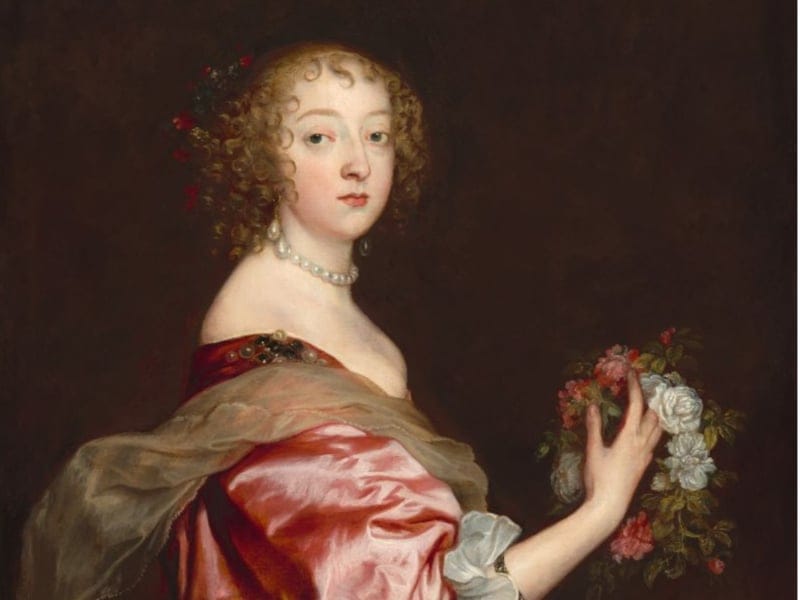
Source: Getty Image / Heritage Images
Unfortunately for Catherine, things didn’t turn out in her favor, and she ultimately met the same fate as Anne in 1542 – execution by beheading. And just like that, the King was once again a single man.
The Last Marriage
After his fifth marriage ended tragically, the King decided to give love another chance. A year later, he married Catherine Parr, and unlike his previous wives, this union was a turning point. Historians believe Catherine significantly impacted the royal court during her time as queen.
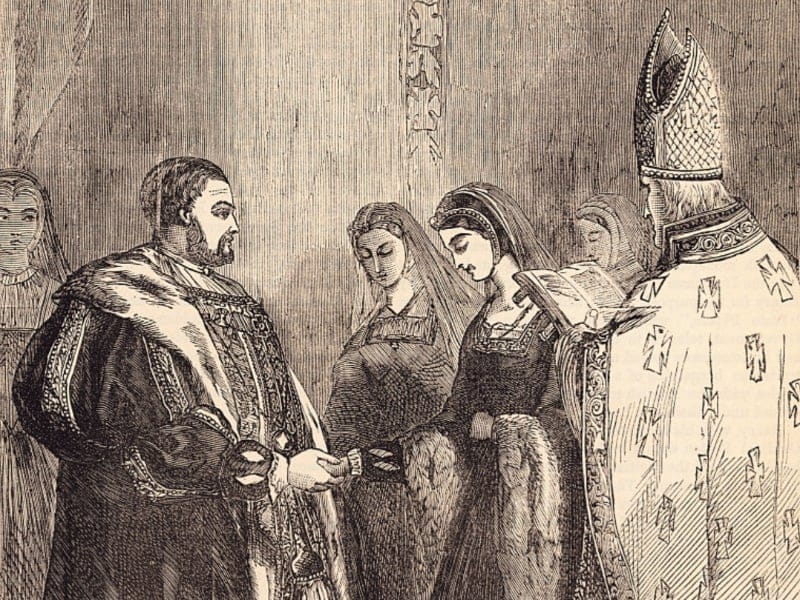
Source: Getty Images/Bettmann
For the most part, she was known to be a supportive partner to the King, and she played a significant role in helping to repair the relationship between the royal family and the Tudor court. She was also a rock for Henry during the war against France, always there to support him.
The Curtains Fall On An Era
After four years of marriage, King Henry VIII took his last breath on January 28, 1547, and Catherine Parr followed him a year later.
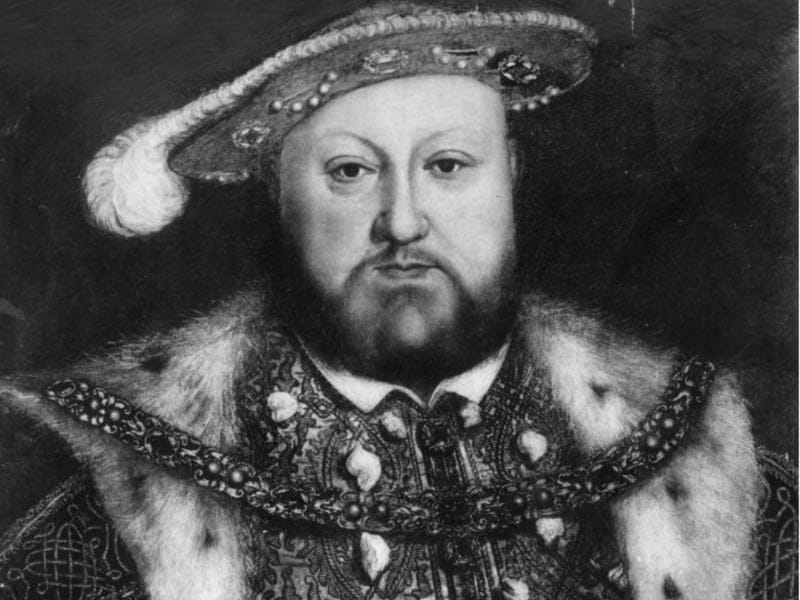
Source: Getty Images/ Hulton Archive
These events, along with the information about the King’s six wives and his royal painter Hans Holbein, played a massive role in helping the researcher, Moyle, discover some new and exciting details about the intriguing 1540 painting. With her findings in hand, she was eager to share them with the world.
Mini Portraits Were A Thing
Back in the day, it was typical for people of importance to have their own portrait artist. Yet, a specific type of portrait was particularly in demand. So, Holbein, the painter, was requested to paint miniature paintings of the King and his cadre.

Source: Getty Images/Print Collector
These small paintings were quite famous back then, as they were easy to take with you wherever you went. So whether you wanted to show off your royal connections or simply keep a loved one close to your heart, these miniature portraits were the perfect way to do it.
Miniature Portraits Were Not For Everyone
Even though portraits were popular then, it was mainly a privilege reserved for the elite to have their own miniature pictures. The members of the aristocracy, who were known for their dramatic and complicated relationships, would often share these tiny paintings with one another.
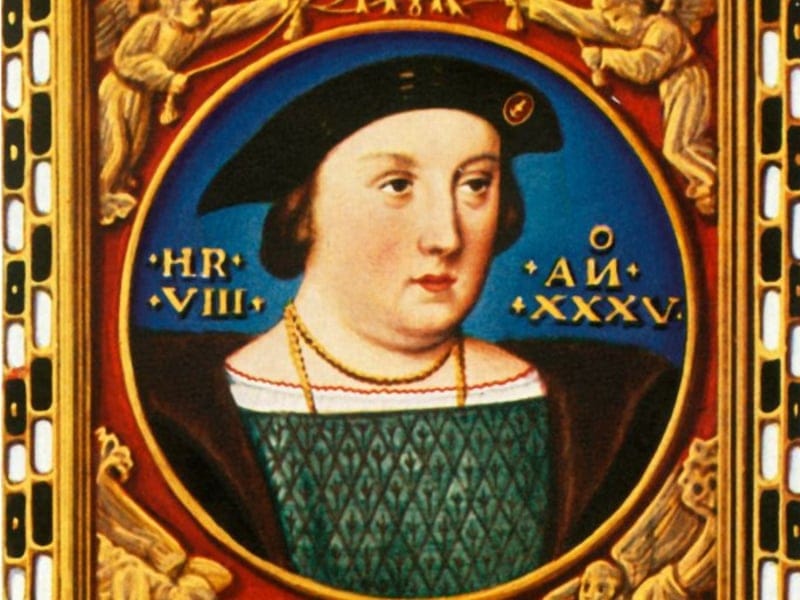
Source: Getty Images/Print Collector
Amongst all these miniature portraits that Holbein created, one particularly caught the attention of Moyle. She was extremely curious to decode its hidden message, if any.
Who Was The Woman?
For many years, the 1540 painting, made by Holbein, had long been believed to depict Henry VIII’s fifth wife, Catherine Howard. Nonetheless, Moyle took a closer look and concluded that this assumption was incorrect.
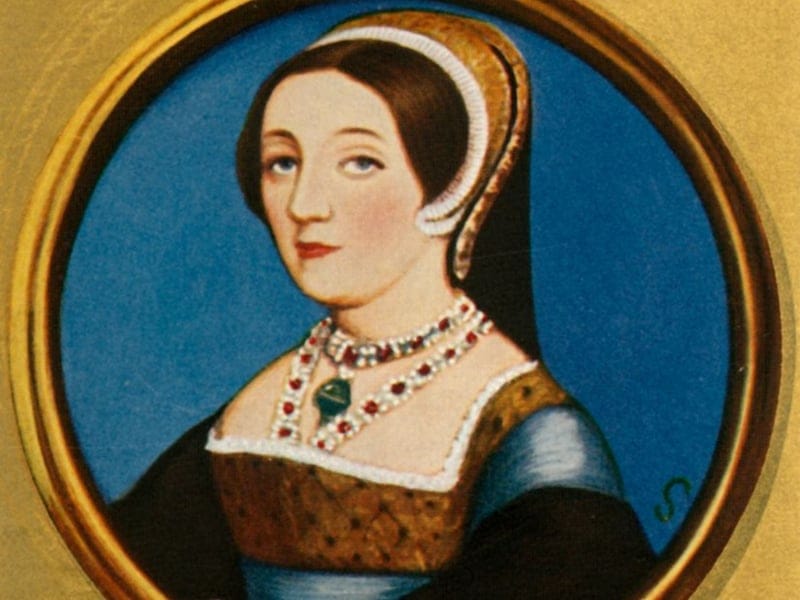
Source: Getty Images/Print Collector
The art expert argued that the woman depicted in the painting was actually the King’s fourth wife, Anne of Cleves. As expected, many experts in the field of art history were skeptical of Moyle’s claim, but she was convinced of her discovery.
Proving Her Claims
Moyle had studied Holbein’s artistic style before, and she was well-versed and knew that the artist had a tendency to include subtle clues and codes in his paintings, which most viewers would not pick up on. Nonetheless, as she examined the miniature painting, she came across an interesting detail- the image was mounted on a playing card.
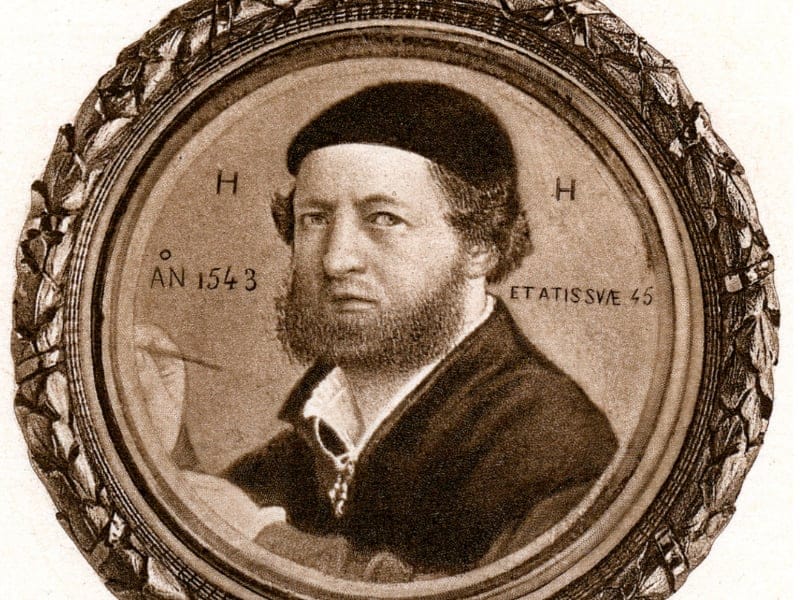
Source: Getty Images/Print Collector
This was not the first time Holbein had done something like that; he previously used a playing card as a mount for another miniature painting he made for Thomas Cromwell.
The Thomas Cromwell Artwork
Thomas Cromwell was one of the King’s confidants, and he played a crucial role in the court of King Henry VIII. When creating a miniature painting for him, it was evident that Holbein had great consideration. The painter chose an ace of spades playing card as the mount for the painting, which was for a good reason.
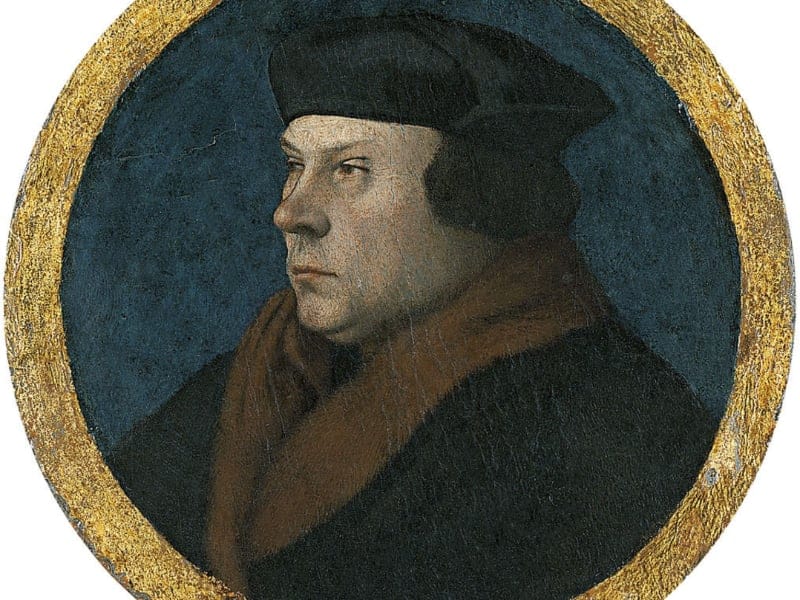
Source: Getty Images/Heritage Images
It was widely known that Cromwell was known for his candid and straightforward way of speaking, which goes well with the idiomatic phrase “to call a spade a spade.” This choice of the playing card was not made by accident; it was a clever and intentional move by Holbein to represent Cromwell’s character.
The 1540 Playing Card
Good ol’ Holbein was known for sneaking little surprises into his art. His 1540 painting, for example, is one of the masterpieces with a significant secret. It features a playing card, but not just any card – it’s a four of diamonds.
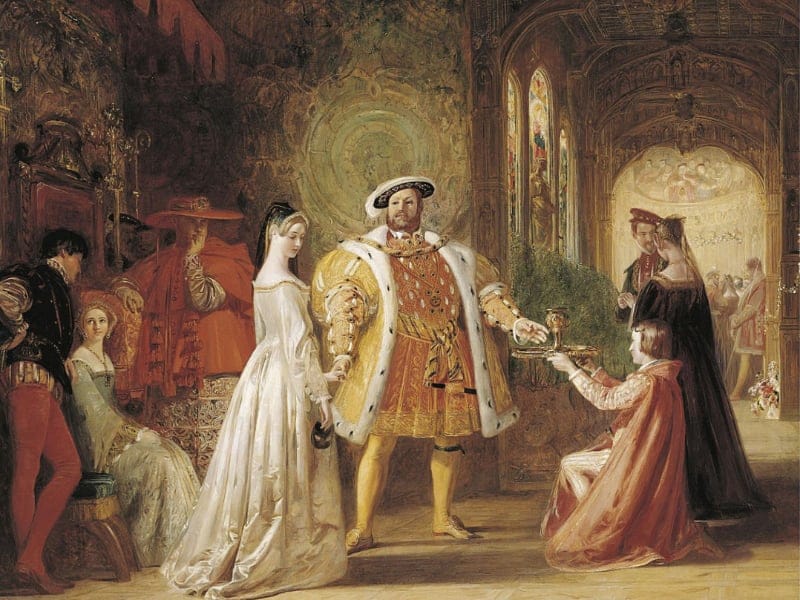
Source: Getty Images/Heritage Images
This might not seem like a big deal, but it’s actually a sly nod to Henry VIII’s fourth wife, Anne of Cleves. By including the four, Holbein subtly dispels the idea that the painting is of Henry’s fifth wife, Catherine Howard. Pretty clever, right?
Still, Need to Be Convinced?
When it comes to Holbein’s paintings, nothing is by accident. He was particular with all the details that appeared in the artwork, and the 1540 creation was no different.
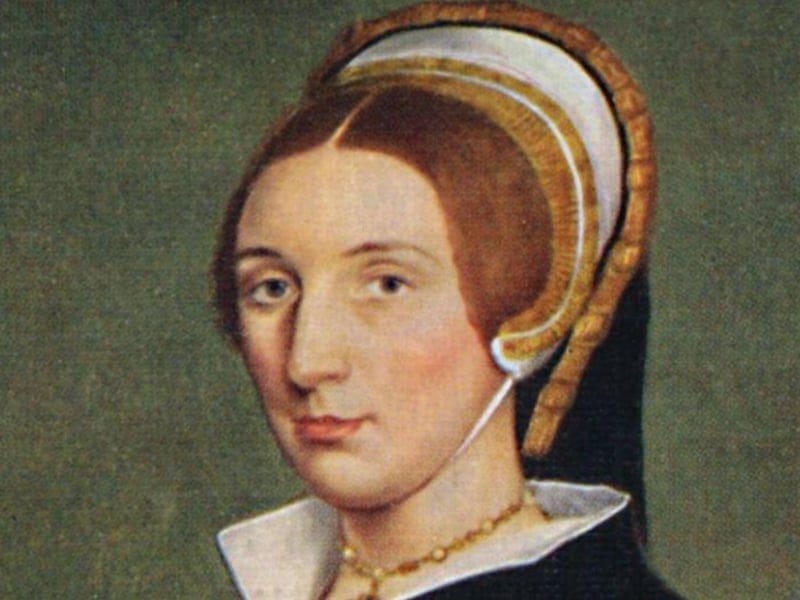
Source: Getty Images/Print Collector
Now, you might think the card was just a random choice, but it’s a clever nod to the fact that both Catherine Howard and Anne of Cleves were married to Henry VIII when this painting was created. As such, it gave both ladies an equal chance of being the portrait’s subject. That’s why Moyle decided to take a closer look at the painting’s details to find out for sure.
Ironing Out The Details
When Moyle first laid eyes on the painting, she couldn’t help but be intrigued by the large jewels the woman was wearing. The jewelry could have belonged to either Catherine Howard or Anne of Cleves, both of whom were married to Henry VIII at the time the painting was created.
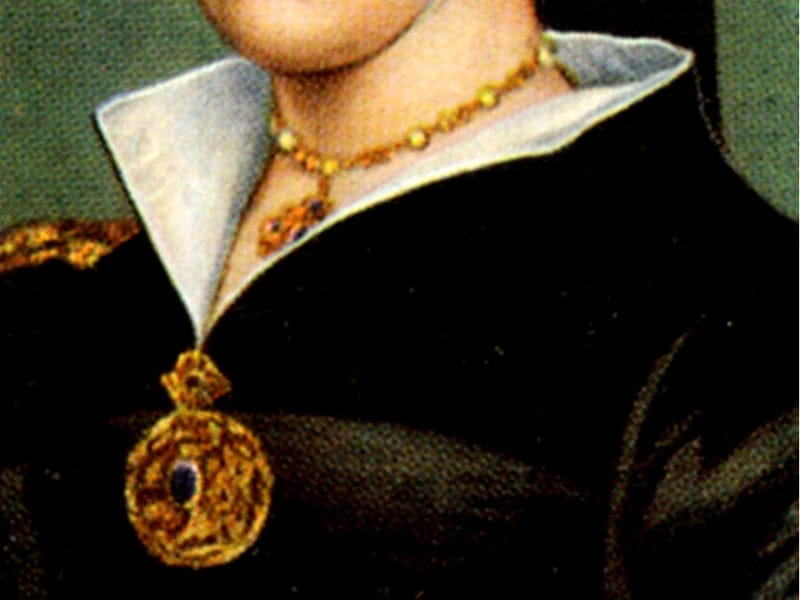
Source: Getty Images/Print Collector
What really caught her attention was the pendant, which was similar to one that belonged to Henry’s third wife, Jane Seymour. According to Moyle, “When Henry got rid of one wife, he was in the habit of handing down their belongings to their successors.”
Anne And Catherine Had A Massive Age Gap
Moyle’s theory that the painting depicted Anne of Cleves instead of Catherine Howard was reinforced by her observation of the woman’s face. Furthermore, Catherine was only a teenager when she married Henry, while Anne was in her late twenties, which showed that they had a huge age gap.
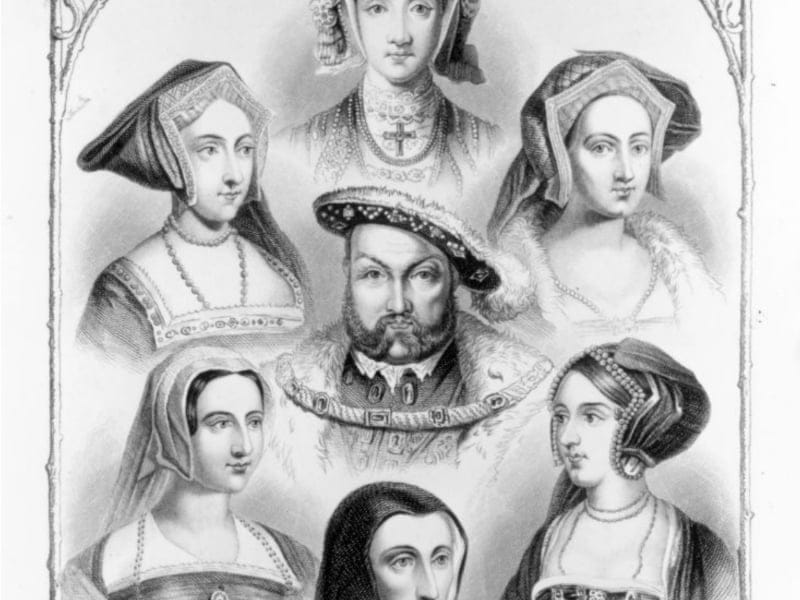
Source: Getty Images/Hulton Archive
The face in the painting appeared to be older, which made it unlikely to be Catherine. To further solidify her claim, Moyle had to investigate other Holbein paintings for comparison. She knew that finding proof in other paintings would be the key to convincing others of her discovery.
Conclusive Discovery
After some digging, Moyle found another portrait of Anne of Cleves, and upon comparing it with the miniature of 1540, she found the resemblance striking. According to Moyle, “They’re the same woman. She has this soporific expression in both paintings.”
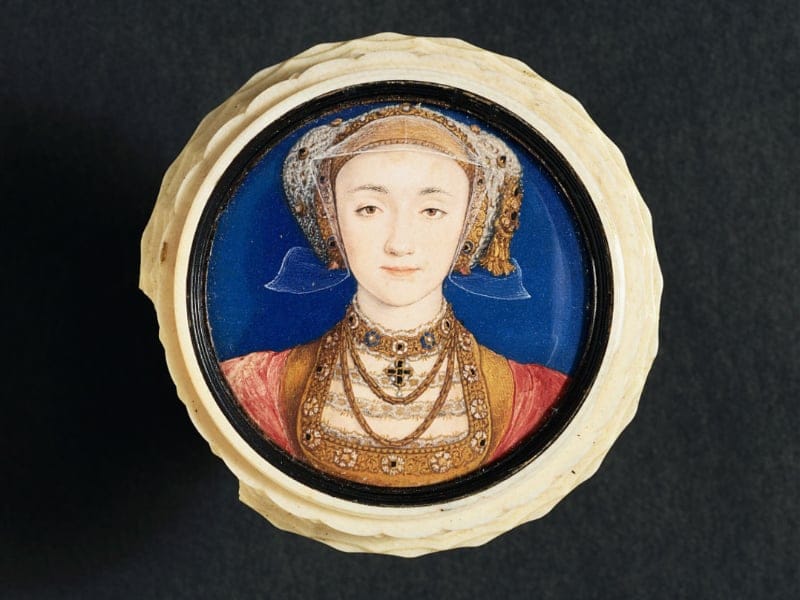
Source: Getty Images/Historical Picture Archive
It was also noted that in the portrait, Anne is wearing English clothing instead of her traditional German attire, which was done to please King Henry and make her more appealing to him. This finding further supported Moyle’s theory that the miniature painting depicted Anne of Cleves.
Why It Stood Out
With the King’s history of divorce, Anne of Cleves was filled with trepidation that King Henry VIII would decide to divorce her, so she left no stone unturned in her efforts to gain his favor. She tried everything in her power to make him happy and to win his affection to ensure the continuation of her marriage.
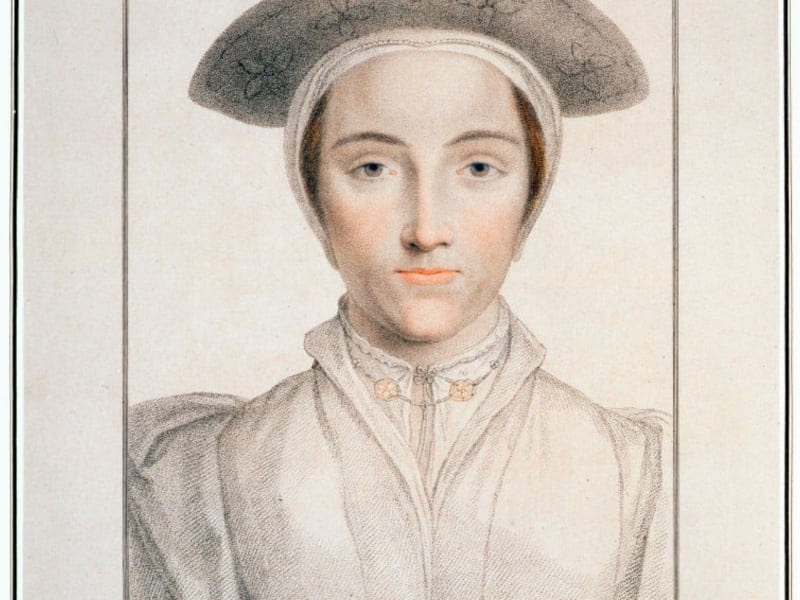
Source: Getty Images/Heritage Images
Moyle mulled, “So, I think there’s a good reason why, in early 1540 [Anne]…might suggest Holbein paint her again, so that in the little miniature that Henry had in his pocket, he could see a version of Anne that was more appealing.”
